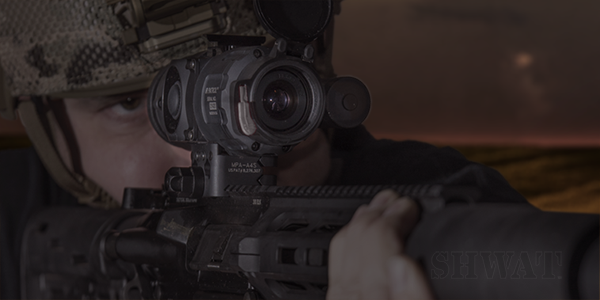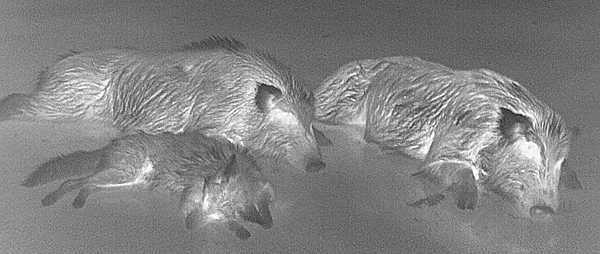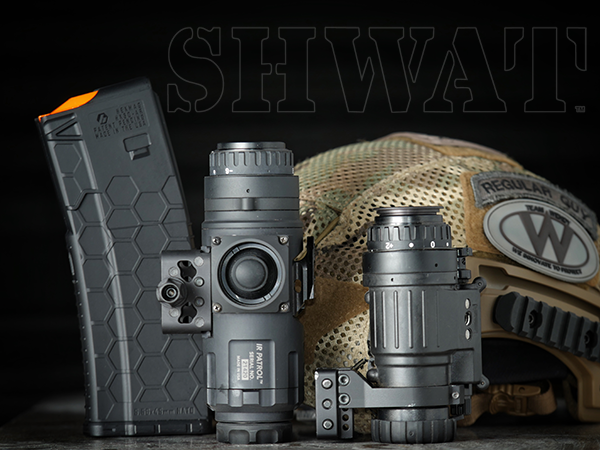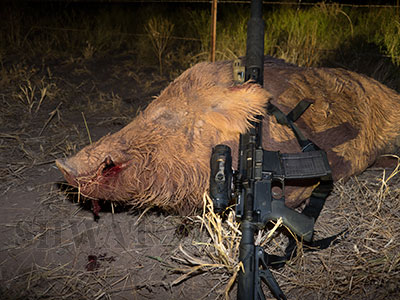Just one year ago we announced the roll out of the IR Patrol by IR Defense. It looked promising, and a year later I have to say this is not only my current favorite night hunting tool, but it gets my “Best Tactical Hunting Innovation of 2015” award. I’ve tested this unit on multiple occasions and have successfully hunted with it. After market options make it even better.

If you’re not familiar with the IR Patrol already, I’ll bring you up to speed. This is a thermal optic; it sees temperature instead of light. For a number of years, predator and hog hunters have generally agreed that thermal optics are the best for spotting animals at night while the best hunting would be done with true Night Vision (NV). Essentially, you could spot warm bodied animals at longer distances with thermal, but Night Vision contrast and image clarity would give you a much more detailed image when closer in.
The IR Patrol substantially changes that equation. Its detailed image is remarkable. You can literally see individual hairs on animals in 640×480 resolution. If you’re new to thermal, that might sound awful in the world of 4K televisions, but when you consider that the viewing distance from your pupil to the screen of the IR Patrol is probably less than two inches, it’s impressive. Instead of using a FLIR thermal sensor, the IR Patrol uses a BAE 640×480 sensor to feed the 640×480 screen you’re staring at. That means you see exactly what the sensor sees. I’ve seen other thermal systems that have 640×480 screens displaying 320×240 images stretched to fit. There’s no comparison. The result is a super sharp image delivered from the IR Patrol to your eye without any magnification.

The lack of optical magnification makes the IR Patrol ideal for helmet mounting, enabling continuous viewing for spotting and navigation. Of course, if the optic were the size of most thermal optics, mounting to a helmet would be a tough proposition. However, the IR Patrol is just shy of two inches longer than a PVS-14. A PVS-14 weighs 12.4 ounces and the IR Patrol weights only 3.6 ounces more. The similarities continue. Both systems use a manual focus ring out front and a diopter to optimize the image to your own eye. No coincidence here! As a matter of fact, the M250 model of the IR Patrol doesn’t even have an aiming reticule. It’s meant for navigation and spotting, and perhaps for use as a clip on with magnified riflescopes.

And how I wish I could get satisfactory results using it as a clip on! While the functionality is built in, I’ve not been satisfied with the results or the user experience. So like every other night hunting optic I’ve seen, the IR Patrols isn’t perfect. That doesn’t make it any less of a game changer.
With that said, I’d have to recommend model M300W which has a reticle and can be mounted directly to a gun. Zero it, and you’re set to go hunting. Want to take it off in favor of a day optic and switch back after dark without have to zero again? No problem. For years, my favorite return to zero optic mounts have all been from Alamo Four Star. They market their DLOC-IRD exclusively through Ultimate Night Vision. With the Wilcox helmet mount on top of the optic and the DLOC-IRD Picatinny rail mount on the bottom, moving back and forth couldn’t be easier or faster. This, too, is a game changer.
Perhaps the biggest game changer of all is the control interface. The IR Patrol uses a single Xbox™ style joy stick for everything except focus adjustments. No fumbling for the right button to press. On top of that, four quick presets are programmable. You can set NUC (think of this as a thermal reset that has to be done periodically) as a single push up, down, to the front or to the rear. Other features such as digital zoom, polarity, take photo, etc. can be assigned to fit your own priorities. A little tactile response in the stick would be nice, but with a little practice you’ll be able to rapidly make whatever changes you want to the IR Patrol with one hand, never even removing the optic from your eye.
Then you have power options for IR Patrol. Built around a single 123 battery power source, you can add an IRD Battery Extension Module to allow for two such batteries, extending the operational time between battery changes. Not enough, you say? No worries, Ultimate Night Vision sells a External USB Power Source Adapter kit that will keep you powered up for 8-24 hours depending on the battery used and the frame rate you select on the IR Patrol. I think an eight hour battery is just fine for me!
Other useful additions to the IR Patrol include scope caps for the front end and amber filters for the rear, lanyards to prevent accidental dropping from a helmet mount and video DVRs to record your hunt.
 Features are great on paper, but it’s hunting where it all comes together. Not long ago in a large open West Texas wheat field, my buddy and I engaged group after group of hogs. Using the IR Patrol, I spotted hogs as expected, hundreds of yards away. We navigate across the field, and I’m able to see incredible detail in the wheat rows, and the tree lines. Not to mention hogs. It was a fantastic night of thermal hog hunting.
Features are great on paper, but it’s hunting where it all comes together. Not long ago in a large open West Texas wheat field, my buddy and I engaged group after group of hogs. Using the IR Patrol, I spotted hogs as expected, hundreds of yards away. We navigate across the field, and I’m able to see incredible detail in the wheat rows, and the tree lines. Not to mention hogs. It was a fantastic night of thermal hog hunting.
At $6500 for the IR Patrol M300W you might have to sell your extra AR-15s to keep domestic tranquility, but the experience of using this optic hunting is its own reward. Or just rent it. Ultimate Night Vision will pack one up and send it to you for four days for $299. Yep, that’s innovative, too. So, give it up folks for the Best Tactical Hunting Innovation of 2015, the IR Defense IR Patrol!

